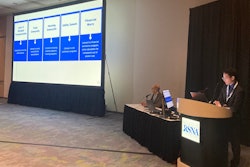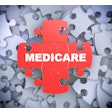
Missed imaging appointments are costly for radiology departments, affecting not only a department's bottom line but also patient care, according to a study published in the September issue of Current Problems in Diagnostic Radiology.
And it turns out that it's not necessarily the most expensive exams that are losing the most revenue due to no-shows, wrote a team led by Rebecca Mieloszyk, PhD, of the University of Washington in Seattle.
"Results of this exploration demonstrate that the greatest annual uncaptured revenue need not correspond to the most performed or most expensive exams," the group wrote. "Although MR and nuclear medicine modalities contain some of the most expensive exams, their no-show rates are typically not nearly as high as those observed in mammography. Mammography screening, one of the lowest-cost exams, can in fact impose a large burden of uncaptured revenue."
Because radiology services can be on the higher end of the cost spectrum, the specialty is vulnerable to greater levels of uncaptured revenue per patient visit than primary care when patients don't show up for appointments, Mieloszyk and colleagues noted.
"In modalities that have fixed costs like radiotracers or specialty technologists, there is an added fixed component to the already substantial opportunity cost," they wrote. "Even in cases where an appointment is filled with an inpatient or a standby patient, there are sometimes lost costs due to staff preparatory work such as insurance authorization, scheduling time, and protocoling."
The researchers estimated the financial cost of imaging exam no-shows at an average-sized, university-affiliated academic medical center in the U.S. that performed 200,000 exams per year across a variety of modalities and had missed-appointment rate ranges consistent with those previously reported in radiology literature. They assumed patients would not be required to pay a financial penalty for missing an imaging appointment and used 2018 Medicare reimbursement rates to calculate uncaptured revenue (Curr Probl Diagn Radiol, September 2018, Vol. 47:5, pp. 285-286).
The investigators projected that uncaptured revenue for six exams with the highest missed-appointment rates would range from $15,000 per year for breast ultrasound to almost $350,000 per year for mammography screening.
| Financial cost of missed imaging exams | |||
| Exam type | Annual volume | Missed-appointment rate | Annual uncaptured revenue (based on 2018 Medicare reimbursement rates) |
| Breast ultrasound | 1,000-5,000 | 1%-4% | $15,000 |
| Head CT without contrast | 5,000-10,000 | 1%-3% | $47,250 |
| Chest CT without contrast | 1,000-5,000 | 5%-10% | $82,125 |
| Ultrasound of abdomen | 5,000-10,000 | 5%-10% | $123,750 |
| MRI of brain, with or without contrast | 5,000-10,000 | 1%-3% | $106,500 |
| Mammography screening | 15,000-20,000 | 5%-15% | $341,250 |
"In total, annual uncaptured revenue due to just these exams was estimated to approach $700,000," the group wrote.
So what can radiology departments do to minimize missed appointments? Internal assessment may be a good place to start, according to the researchers.
"Quality improvement projects could examine the effect of modified scheduling and patient reminder systems in order to reduce no-shows and recapture considerable revenue," they concluded.




















